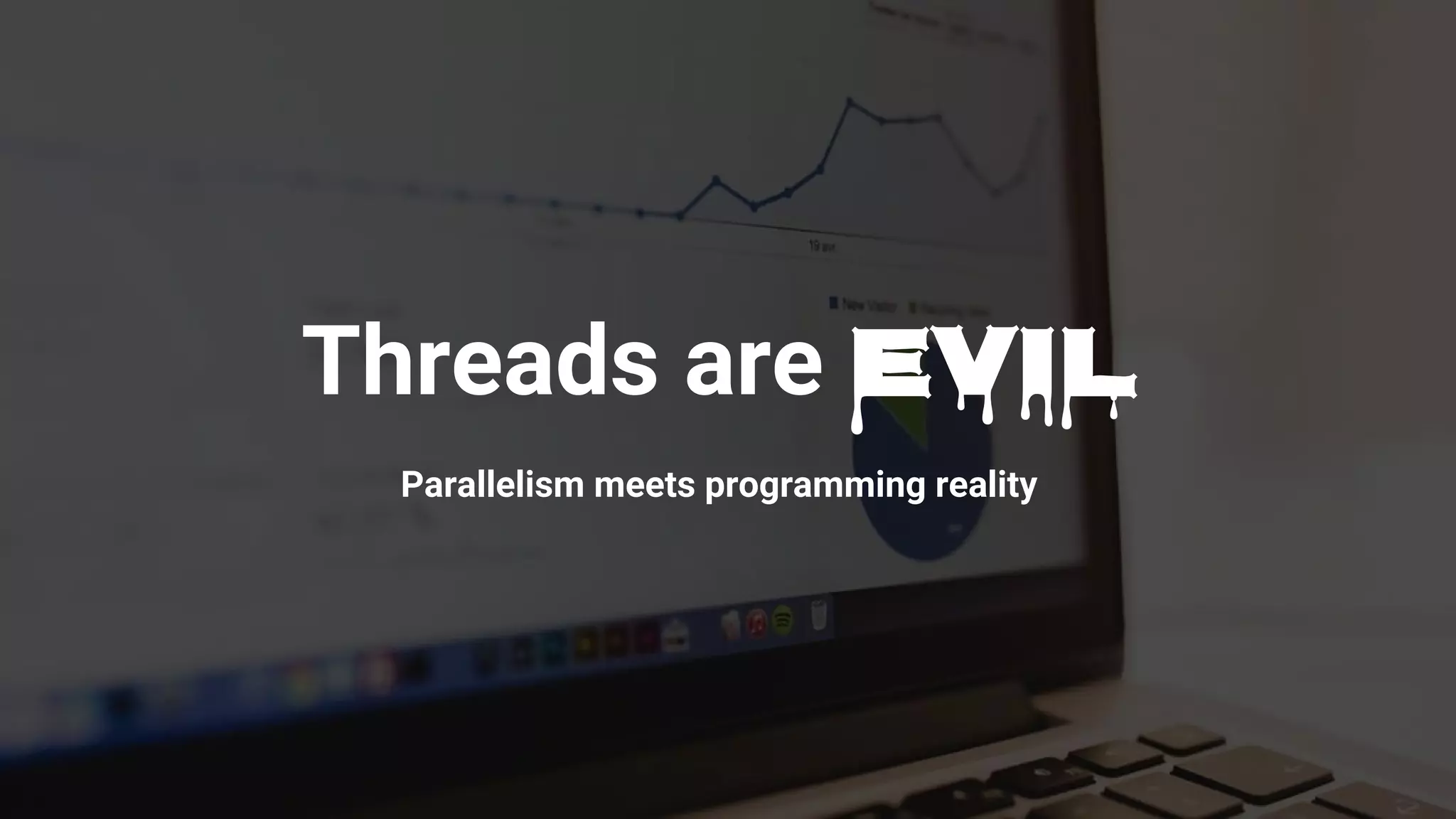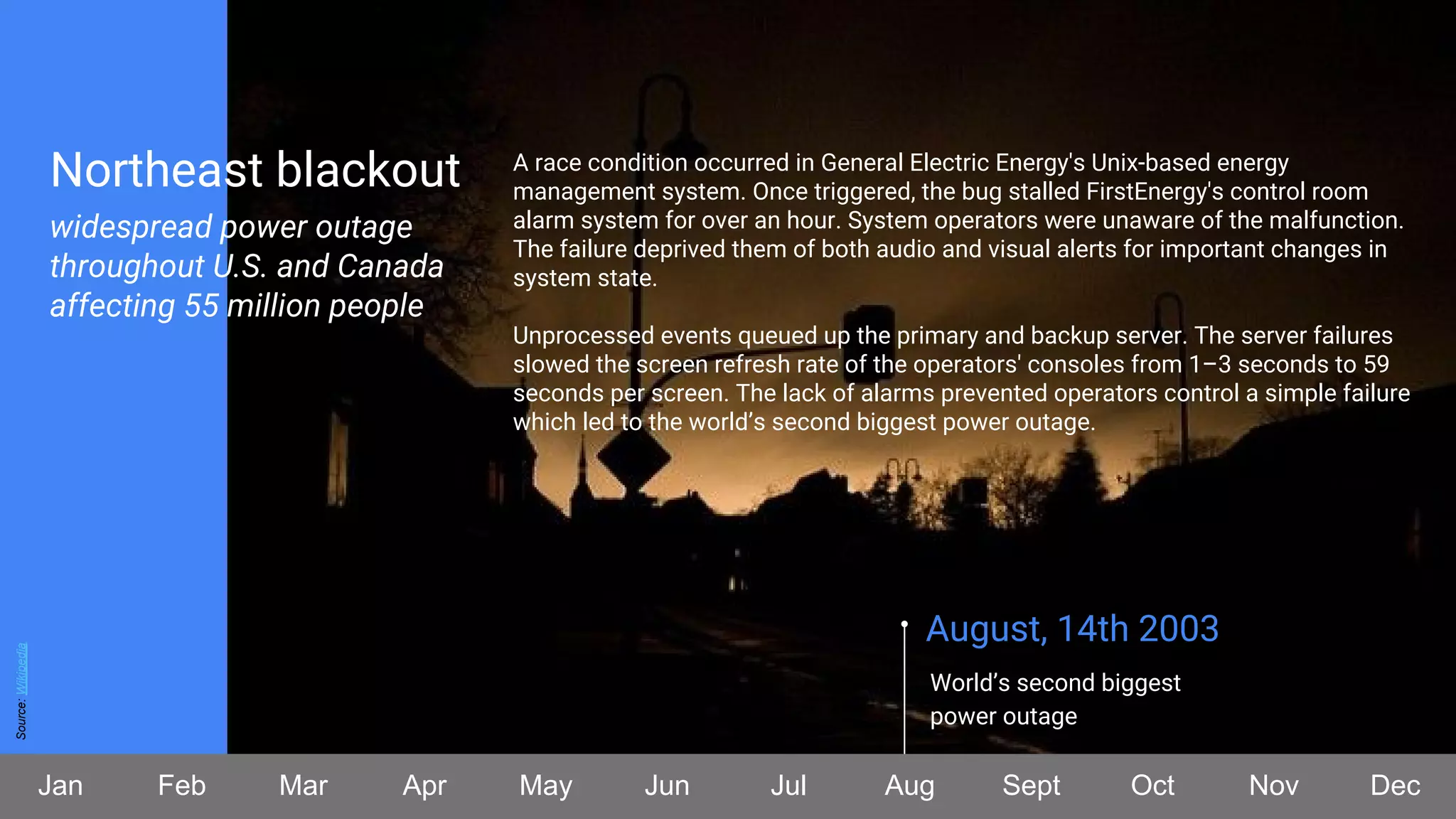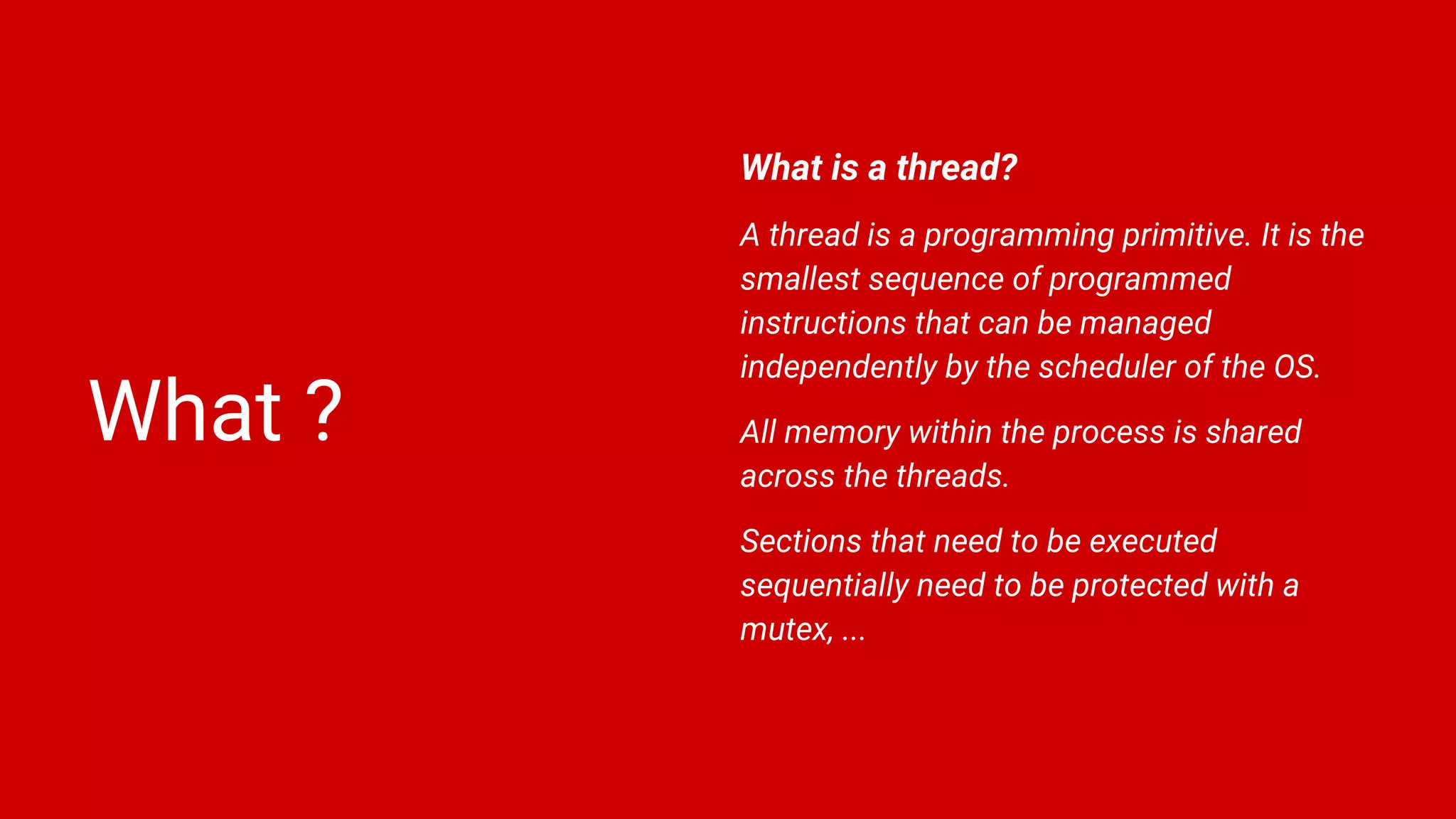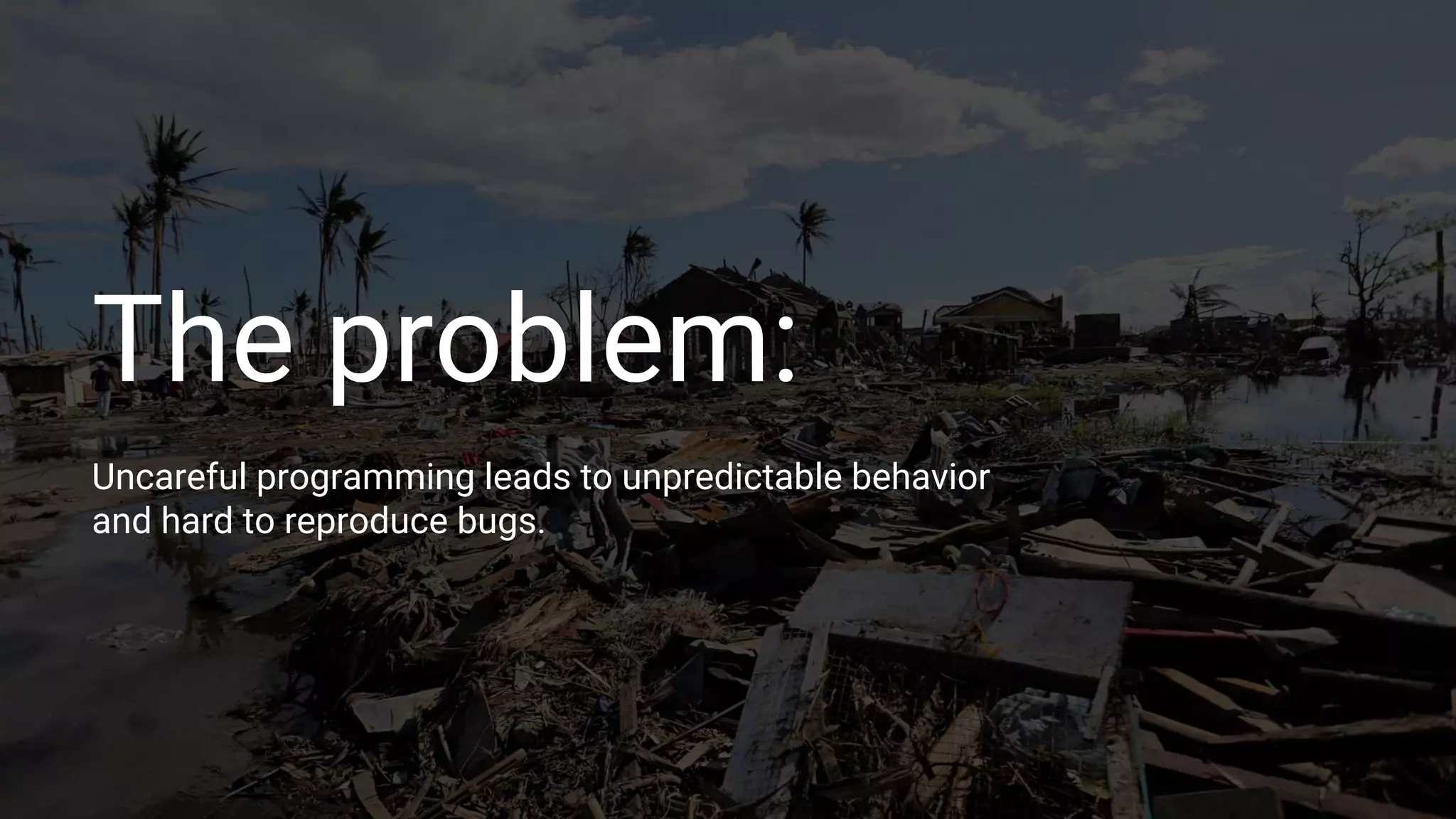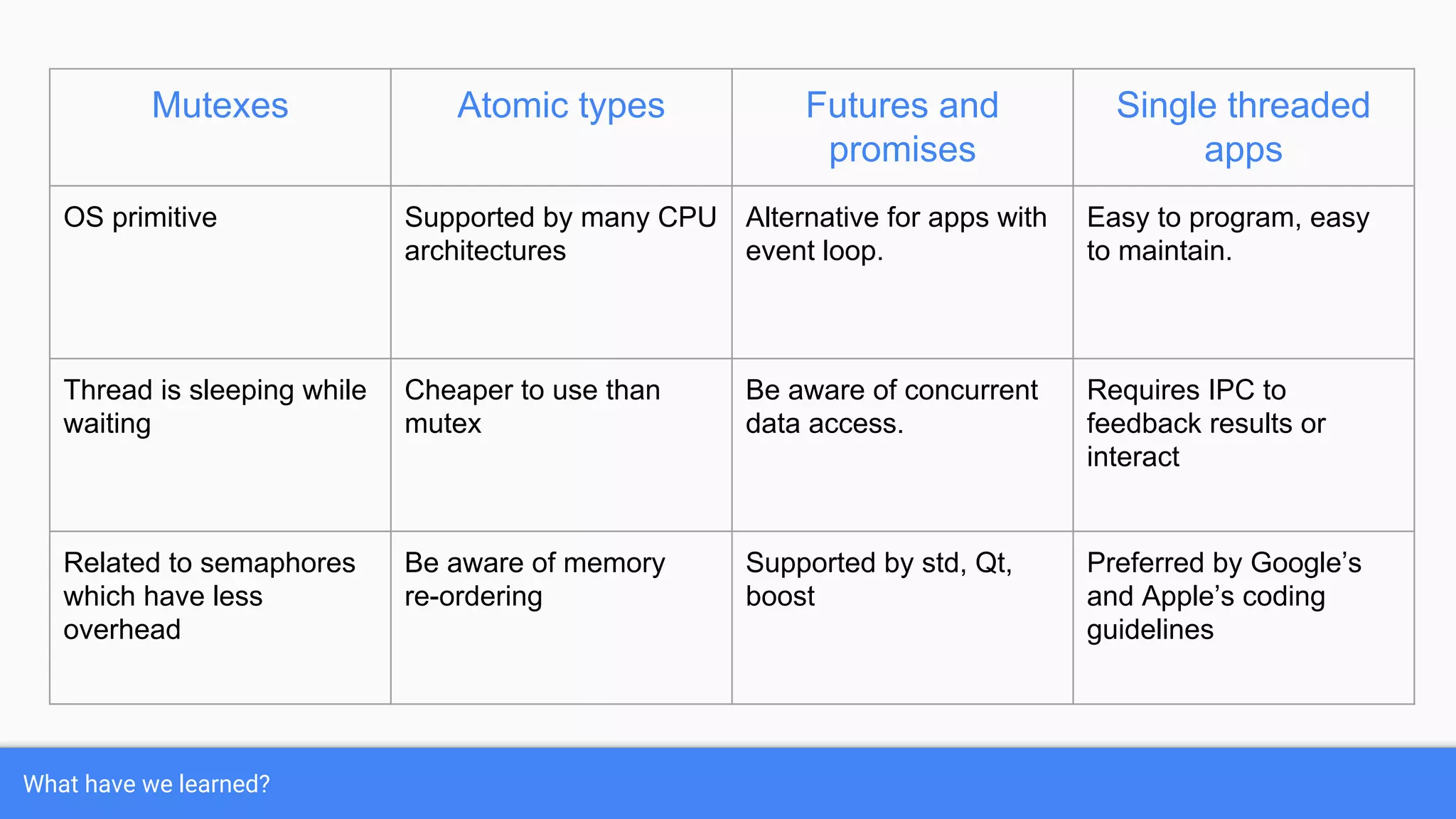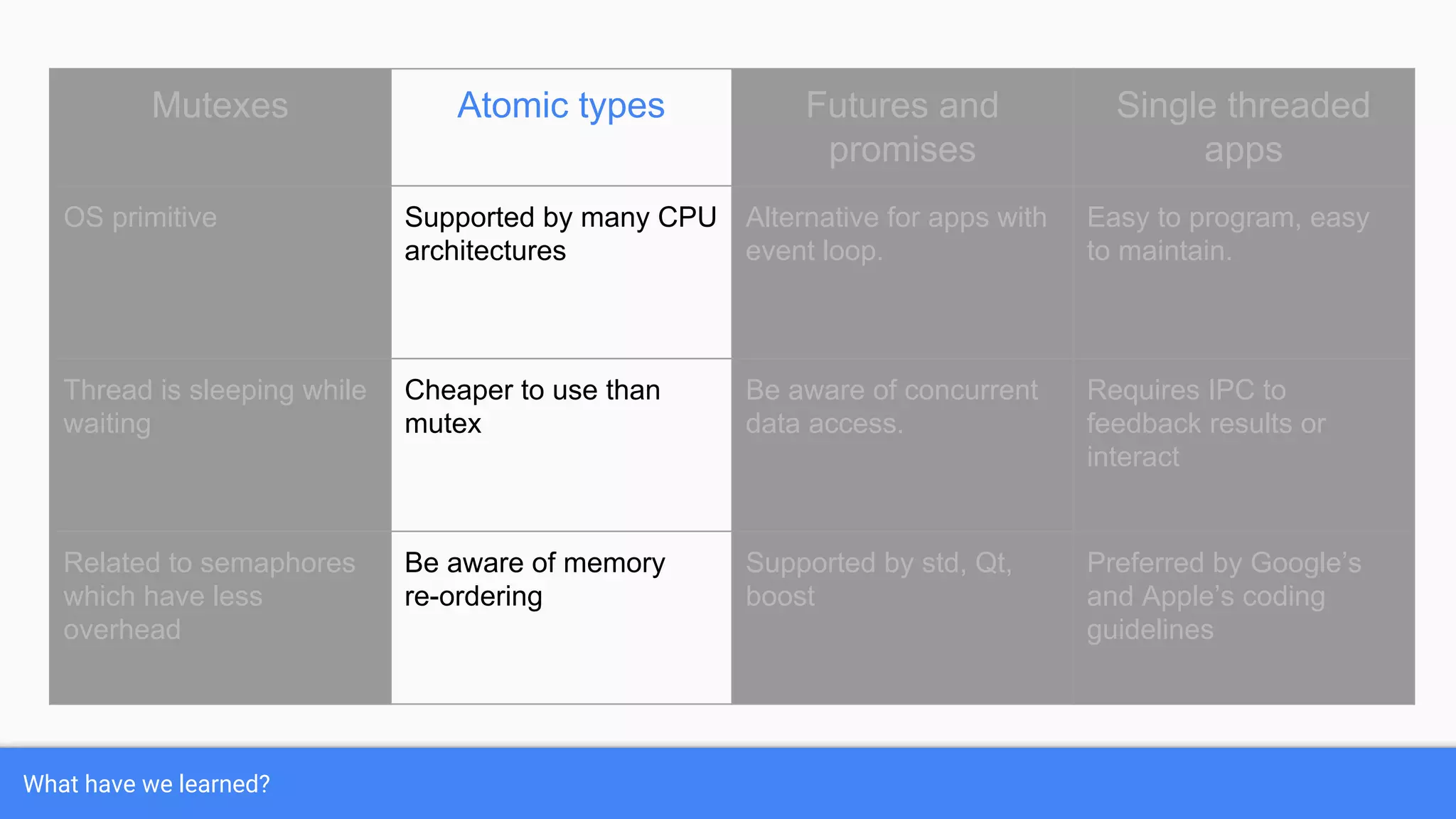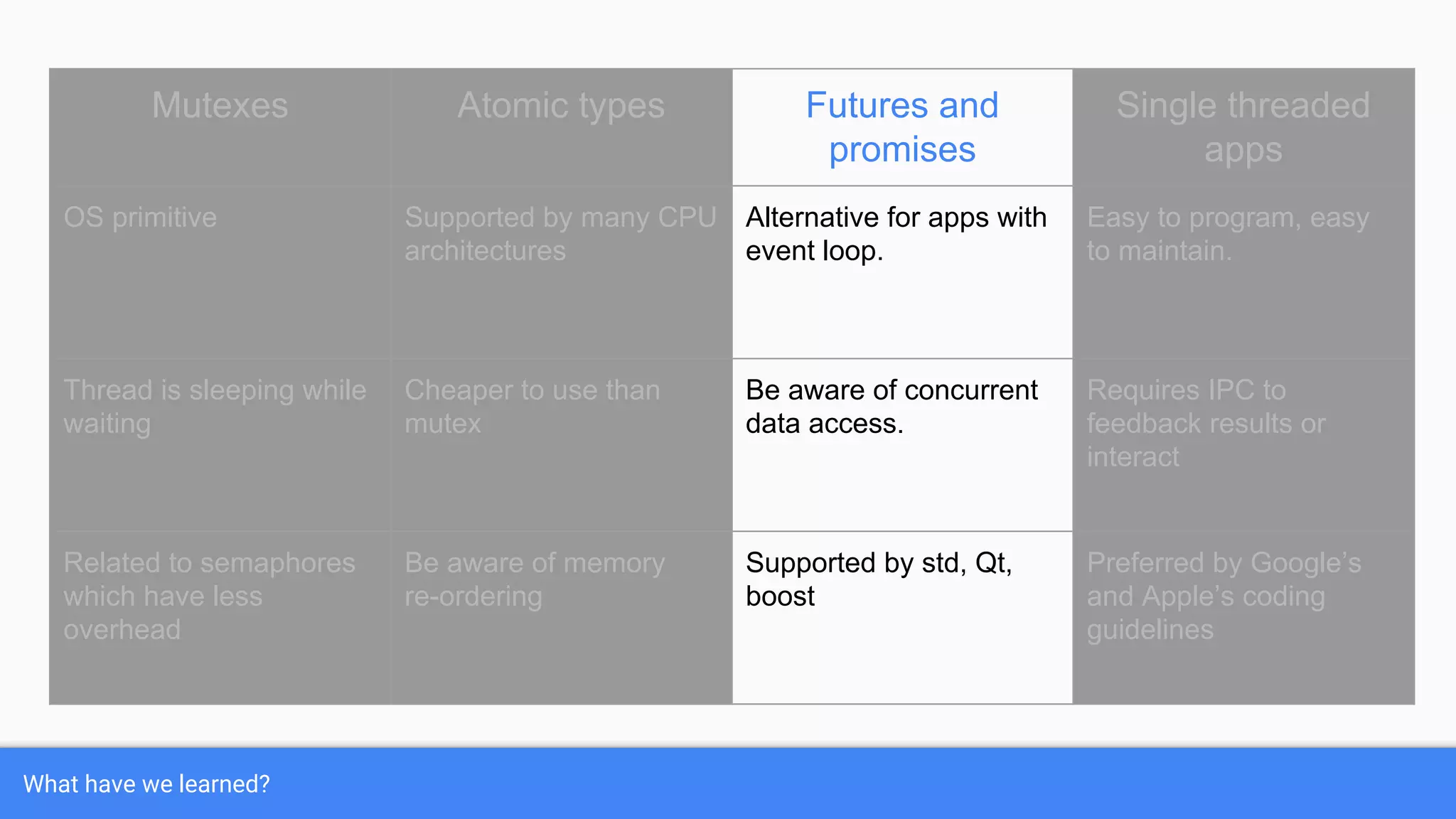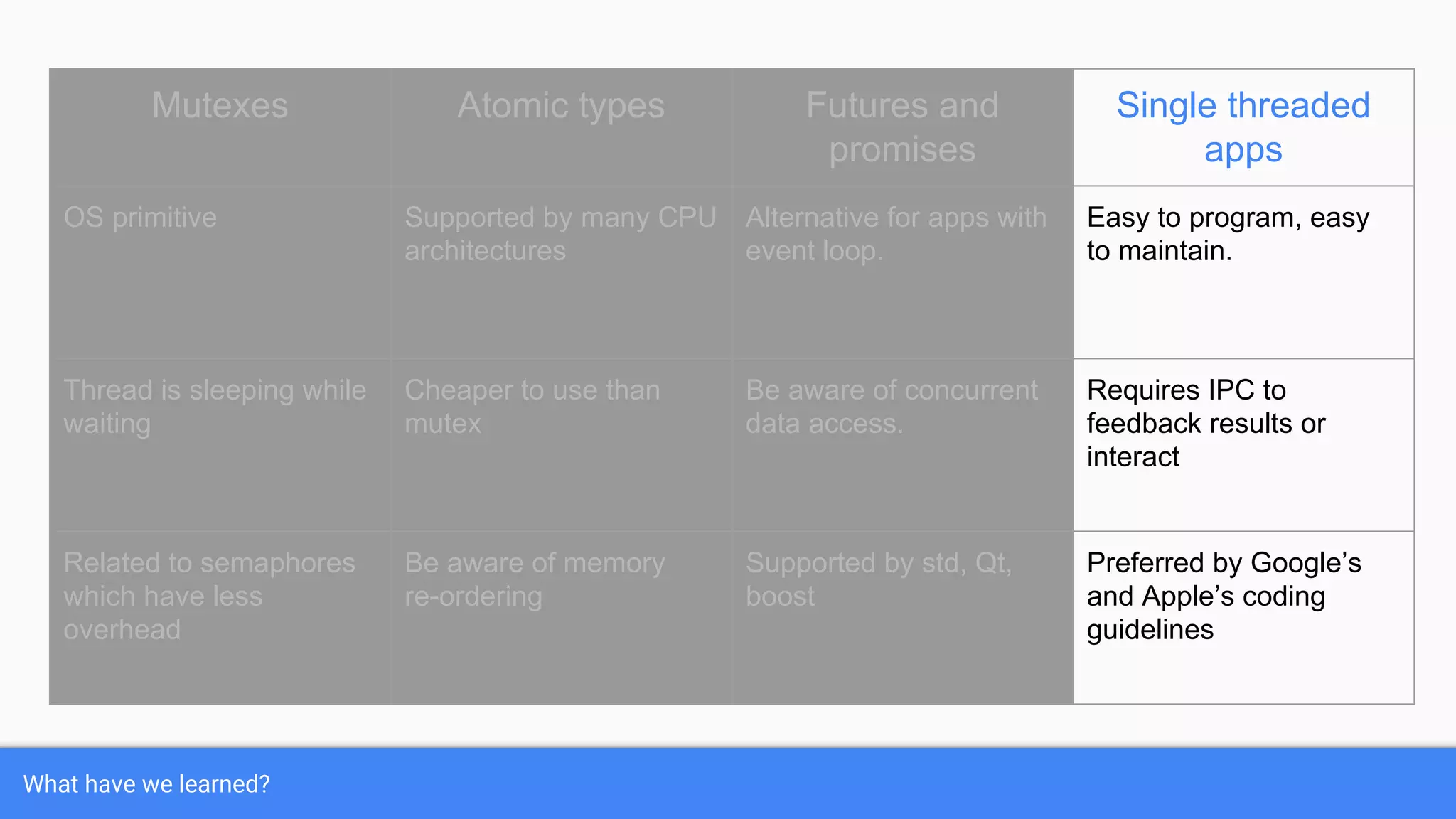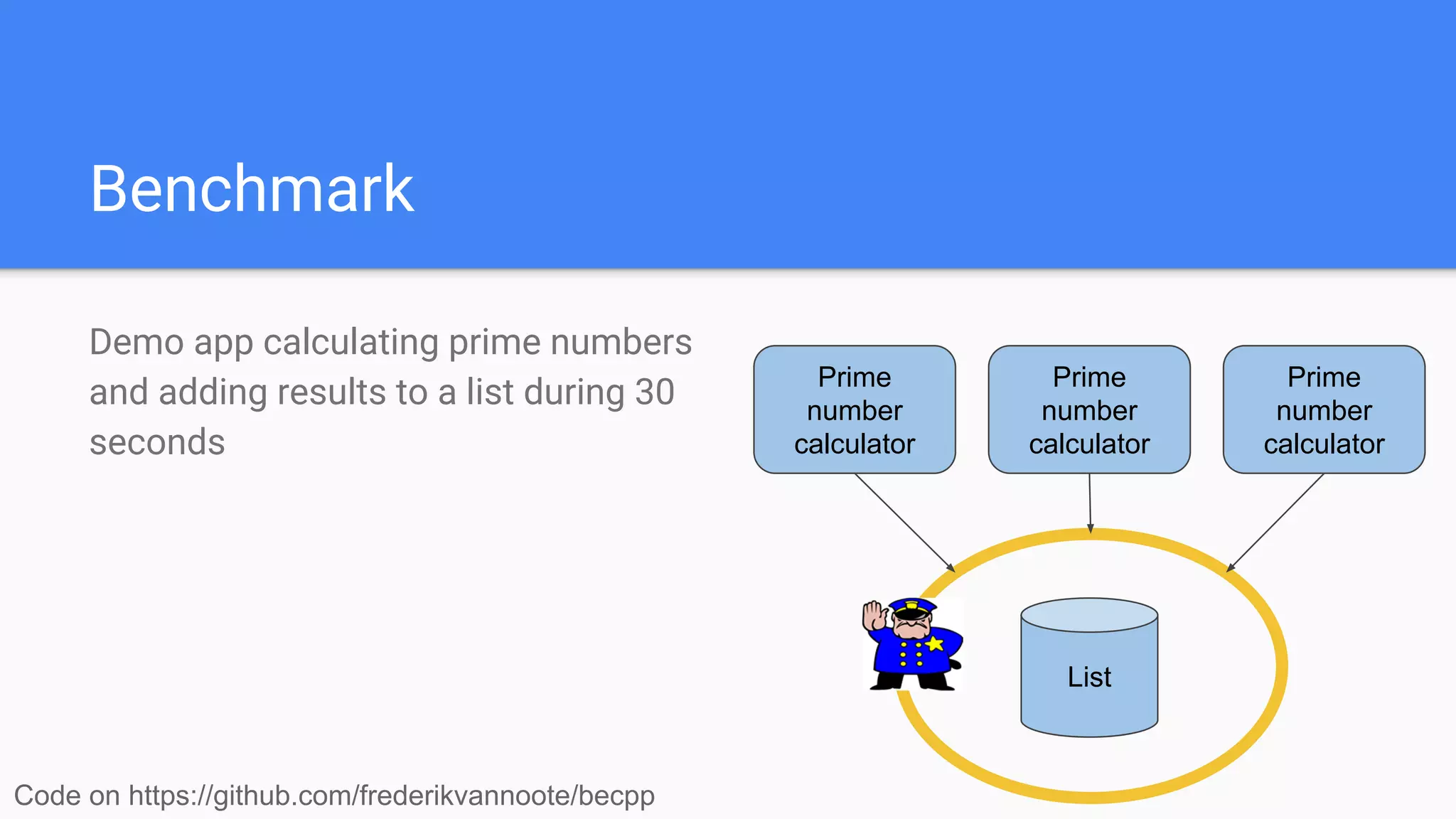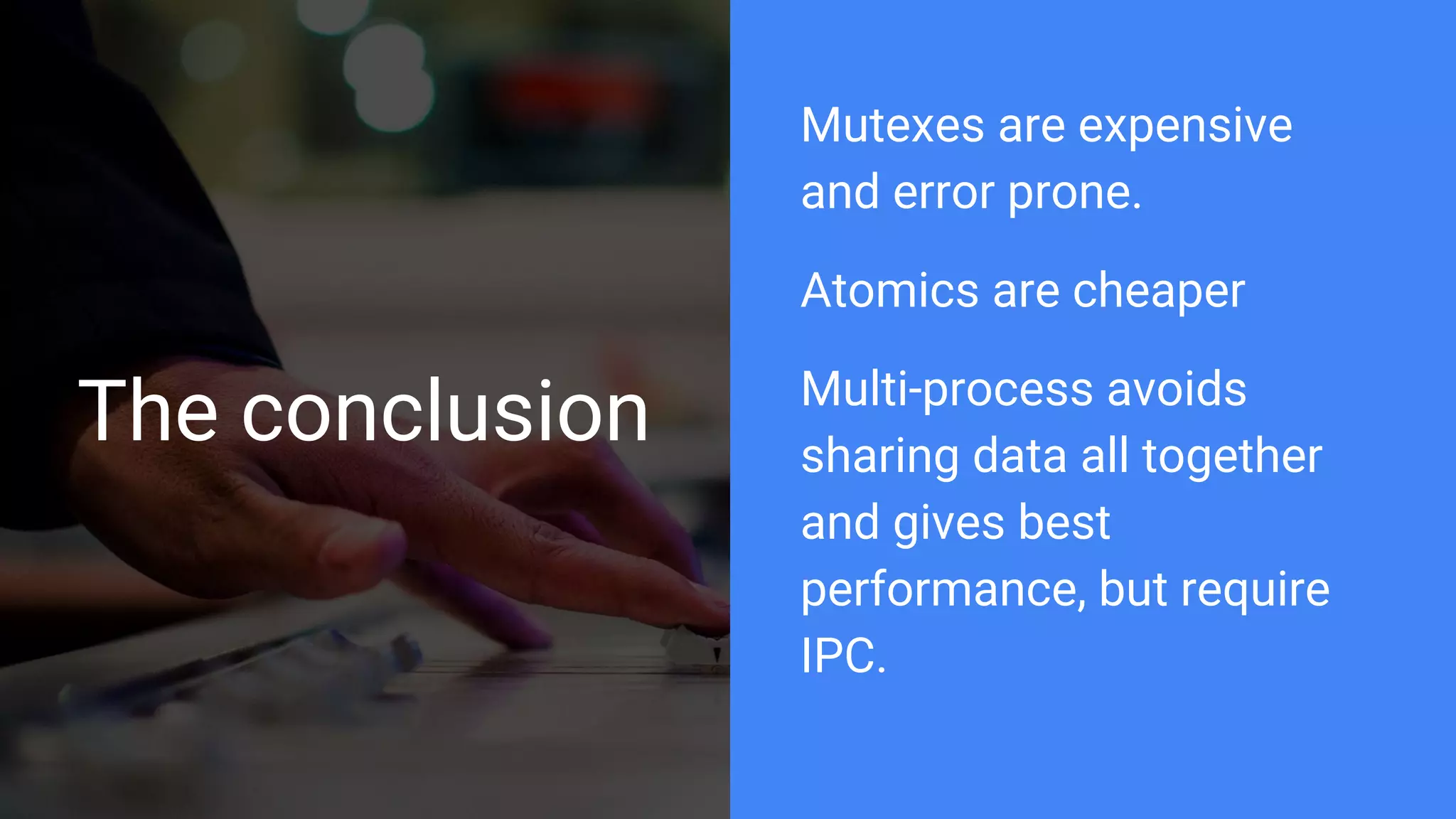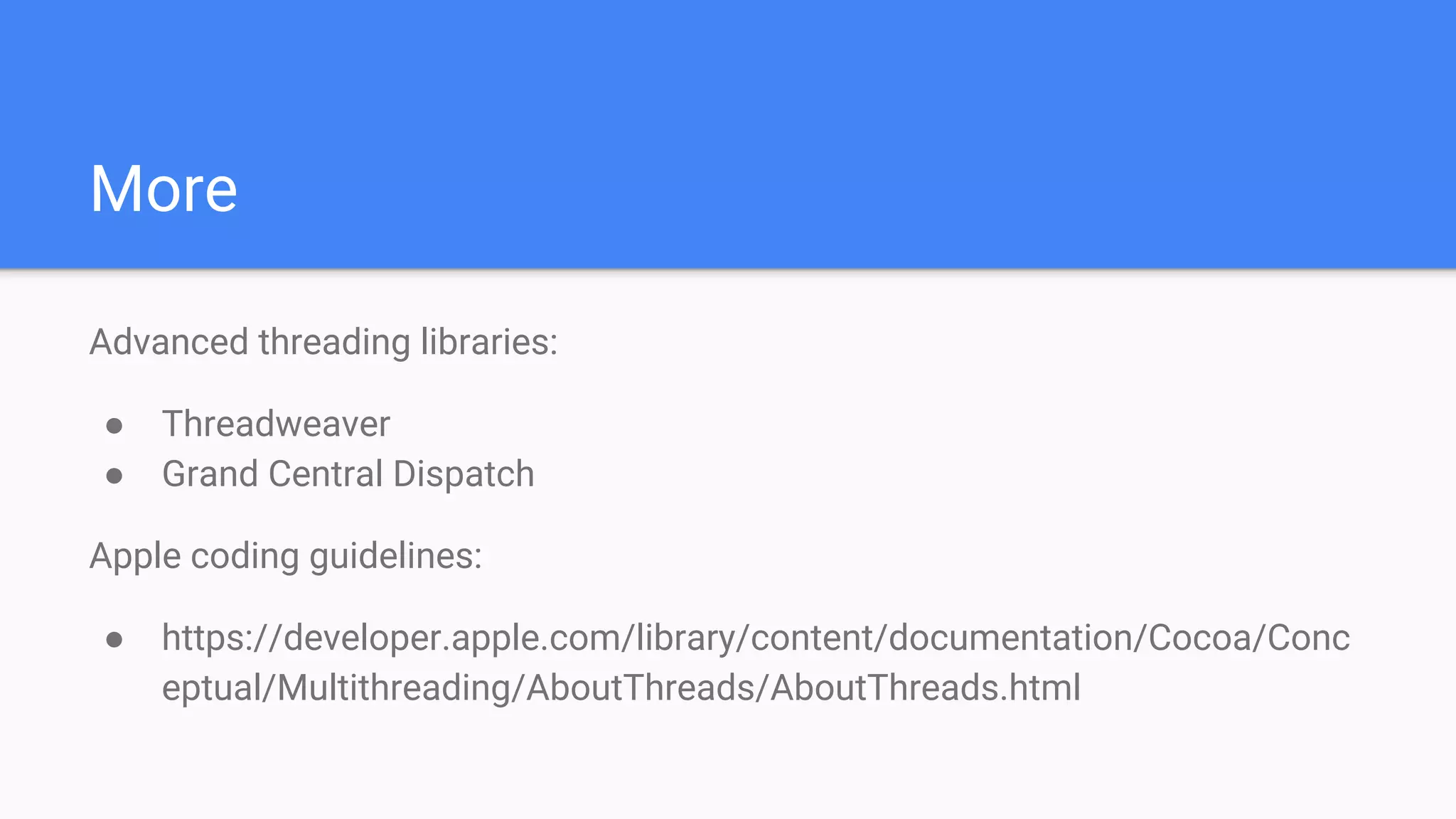The document discusses the complexities and challenges associated with parallel programming, specifically focusing on threads and their management. It highlights a significant power outage caused by a race condition in an energy management system, illustrating the risks of unprotected concurrent data access. The conclusion emphasizes the use of atomic types and multi-process approaches as more efficient alternatives to mutexes for ensuring safer and more reliable programming.
